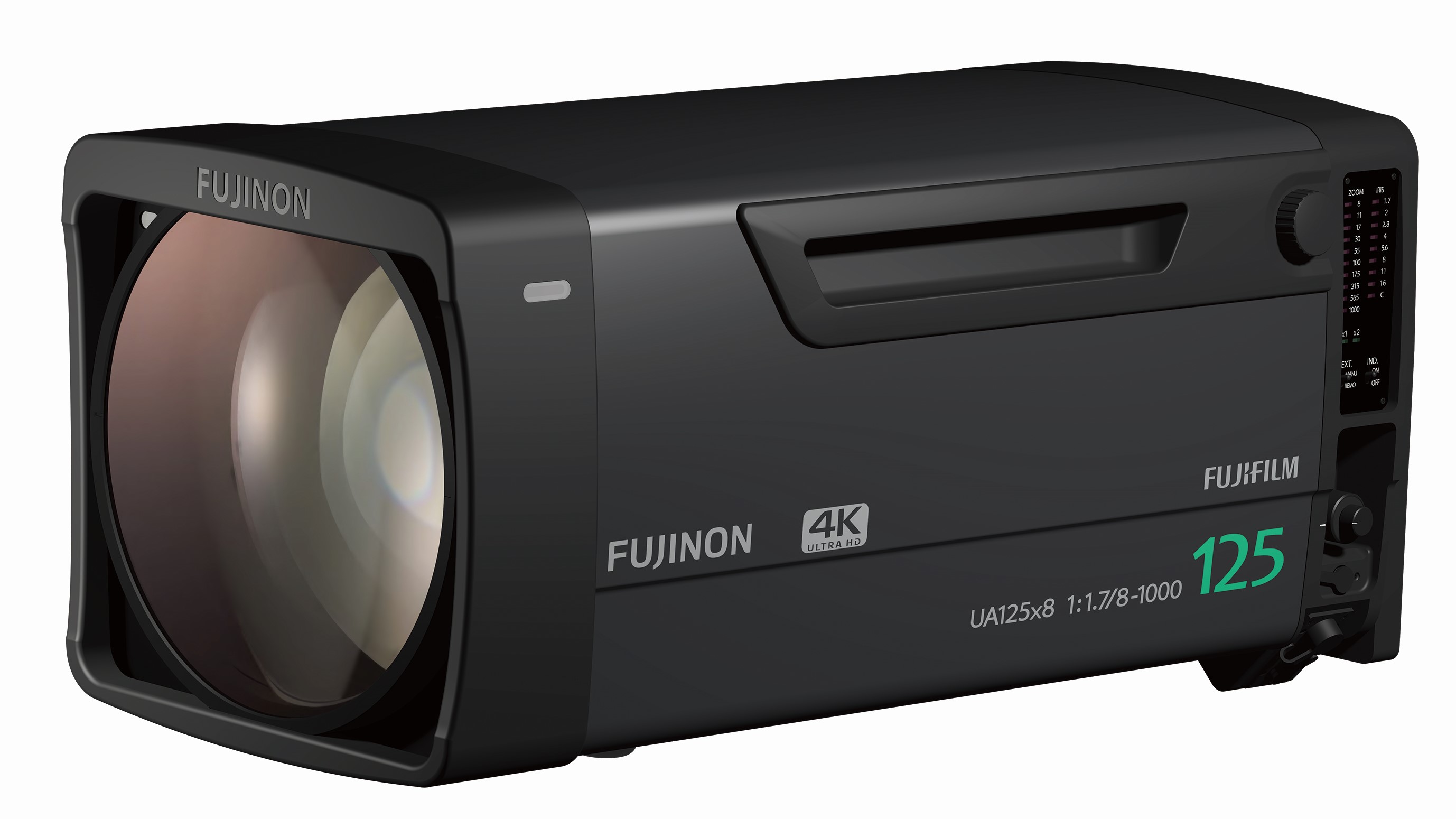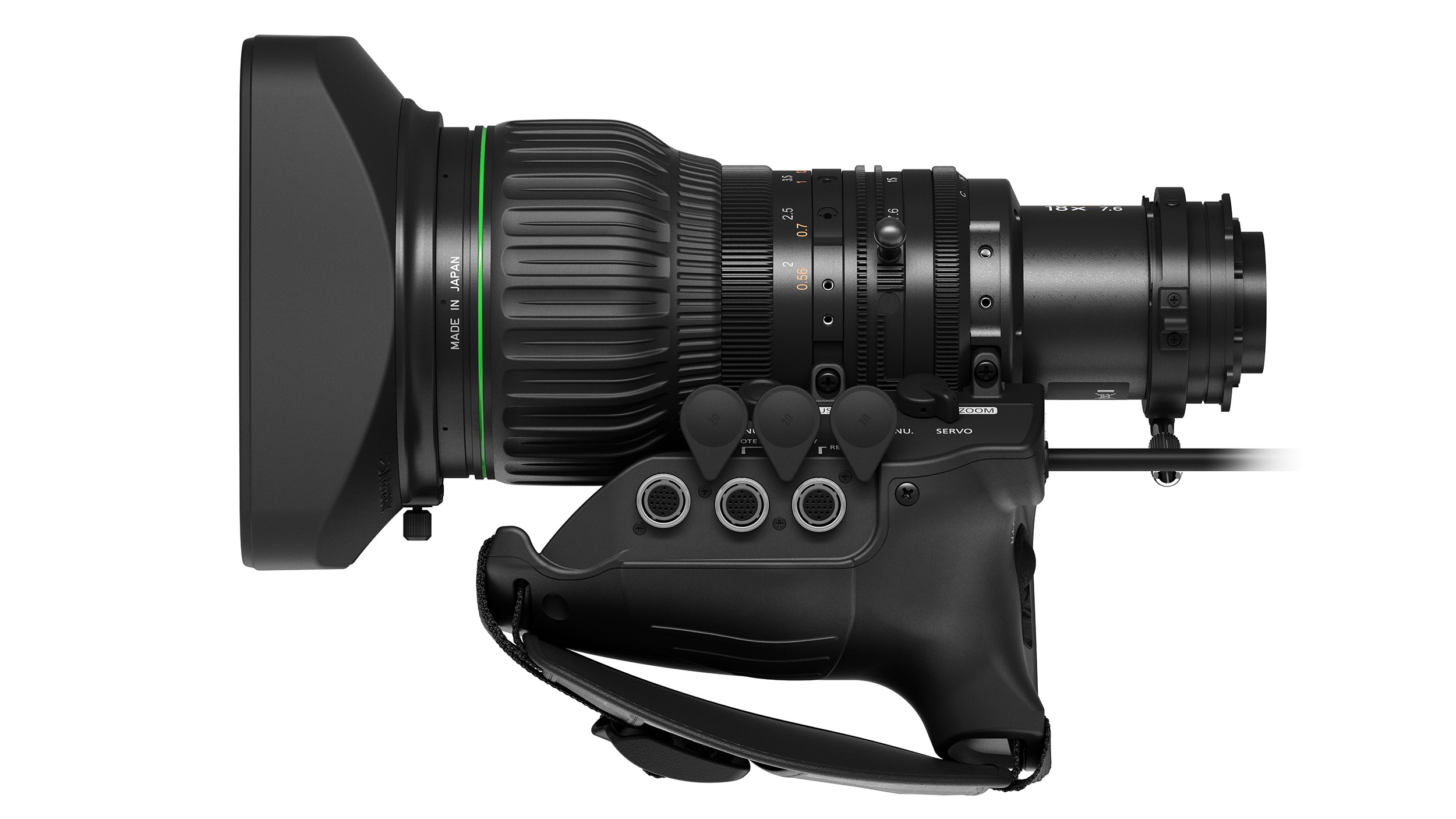Lensmakers Focus on Focus, Lighter Weight
More high-resolution content, lighter weight equipment guide tech development

SEATTLE—Two of the largest providers of professional camera lenses to the broadcast industry recently introduced new glass designed to improve the production of an increasing supply of 4K (and higher) resolution content.
FUJINON
One of the new lenses grew out of a Fujifilm box lens developed for NHK’s postponed 8K coverage of the Olympics for the Japan television market, according to Gordon Tubbs, vice president for broadcast and cinema products for Fujinon. These 8K cameras designed for the project use Super 35 single sensors and PL mount lenses.
“Our people thought about developing as long a box lens as was possible,” Tubbs said. “Most PL-mount motion picture lenses, including the ones we developed for NHK, were like a 5x1, 7x1 zoom. I mean, your iPhone can zoom twice as far as these extremely expensive lenses we were developing for NHK.
In response, the company developed a 20x 35mm box lens, Tubb said.
“Twenty doesn’t seem like much, because we make ENG lenses in 4K that are 24x, that are normal size hand-holdable lenses,” Tubbs said. “This lens will go from 35mm to 700mm, and then with an extender go out to 1,000. That’s unheard of in PL mounts.”
The result is a difference in size and weight than with most professional lenses, according to Tubbs.
“In order to do that, the lens is heavier and bigger than our 125 box lens for 2/3-inch chip cameras,” Tubbs. “It’s a 70 pound lens. You couldn’t fit it on your coffee table, it’s too big. All of that to get a 20:1 lens. So NHK bought a few of them.”
Get the TV Tech Newsletter
The professional video industry's #1 source for news, trends and product and tech information. Sign up below.
(Note: Several camera makers have introduced 8K, 2/3-inch, three-chip cameras that allow use of smaller 8K lenses.)
Tubbs added that the new lens had potential beyond NHK’s immediate needs.
“We looked at the lens and said ‘You know something? That’s got a PL mount on it; it’s got a cine mount on it. What’s to stop us from marketing that to people who are doing concerts?’ HBO wants that cine look for its concerts. If they’re going to use cine cameras, this could be their lens. It’s the only PL mount 20x 8K zoom lens in the world.”
He thinks there’s also a market for the 20x zoom in sports production, where many super slow-motion cameras are single sensor, PL mount. “The lens is so expensive the only thing they’ll do is rent it as they need it, which is why we’re concentrating on the rental companies,” Tubbs added.
REVISITING AUTOFOCUS
More than a dozen years ago, broadcast lens makers introduced an autofocus feature on their HD lenses. But it never sold all that well.
Fast-forward to today, Tubbs said Fujifilm is revisiting autofocus.
“Focus is much more important in 4K because depth of field in 4K is actually shorter than HD, so there’s less in focus,” he said. “That will be true again when you shoot in 8K. And we know that the viewfinders on the cameras really aren’t that advanced to be able to really, precisely show if you’re in and out of focus.”
The technology for Fujifilm’s new autofocus system is called “phased detection” and is entirely new, according to Tubbs.
“It is much more accurate than the prior system, faster and it doesn’t overshoot,” he said. “The [old system] could sometimes go past focus and then come back real quick. It won’t do that. The other thing it can do is reach focus from a much further out of focus position. With [the old system], if you were considerably out of focus, if it was just a blur, you were looking at a fog bank, it wouldn’t find focus. Now this system can find focus even from that far out of focus.”
The autofocus feature is available on Fujifilm’s 4K 107x box zoom for about an additional $20,000.
Fujifilm also introduced a UA125X8 zoom ratio box lens last spring, the longest in the industry, according to Tubbs.
“This lens is not only the longest telephoto zoom lens, it’s got the longest zoom ratio at 125x, of any broadcast lens ever made,” he said. “It’s got the widest angle of any field lens, sports lens that was ever produced. It starts at 8mm and goes to 1,000mm, so with a 2x extender it goes out to 2,000mm.”
CANON
Canon has two tiers of 4K lenses, the difference being a function of the spec, according to Larry Thorpe, Canon USA’s national marketing executive.
“We tightened the specs on the upper level, and that costs more, of course,” Thorpe said. “The specs we talk about are sharpness across the image plane, tightening up on the lateral and longitudinal chromatic aberration. And then last but not least, doing justice to the new world of HDR, getting deep, rich blacks and good treatment of speculars in the lens.”
Thorpe said Canon discovered a gap between the two wide angle zooms in Canon’s upper level of 4K lenses. To develop the new lens to fit that gap, “we mobilized some of the latest of our technologies in lens design that we’ve been able to improve, along with more powerful simulation capabilities and manufacturing capabilities. We saw that we could slot in there a lens where we push both the wide angle and the telephoto end.”
The result is the CJ20ex5B 4K UHDxs, a 20x zoom that goes from 5mm to 100mm, (200mm with a 2X extender.)
“This baby comes in at just under 5 pounds, [4.9], is 9.9 inches long with a filter diameter of 127mm,” Thorpe said. “And it has the latest in our digital drive unit that gives you the capability of broadcast controllers controlling zoom and focus. It also has an output for virtual, giving you the 16 bit information on the virtual application. It has a range extender of two times. The horizontal width that you get, the angle of zoom horizontally that you get at 5mm is 87.7 degrees.”
Thorpe emphasized the importance of HDR to the development of Canon’s lenses.
“We pay high attention to dynamic range,” he said. “We have the latest in optical coatings to ensure we get a deep, rich black, which is essential to good HDR. And then the choice of glass materials allows us to properly handle speculars.
With its small size and weight, the new lens has applications with a portable camera. “But where it really shines for that focal range is in a lot of coverage of small venue sporting arenas, probably basketball being the best illustration,” Thorpe said. “And because of size, weight and focal range it has application for SkyCams.”

COMPACT AND LIGHTWEIGHT
Last spring Canon introduced the CJ18ex7.6B KASE S, a new addition to its UHDgc series of 4K UHD broadcast portable zoom lenses. The new lens is designed to be used with 4K UHD broadcast cameras with 2/3-inch sensors. It has the same optical specifications as the existing CJ18ex7.6B IRSE/IASE except it has no optical extender. The lens features a zoom range of 7.6-137mm and weighs just 3.7 pounds.
The 4K UHD imaging quality is delivered at a price point that matches well with the many lower-cost 4K cameras in the market. By eliminating the optical range extender, the lens maintains a compact and lightweight design to meet the versatile and ever-changing needs of a broad range of video productions, including documentaries, sports, events and news coverage. Additionally, the lens is compatible with the new Canon ZDJ-G01 Zoom Demand and FDJ-G01 Focus Demand accessories that provide operators with enhanced functionality and operational control of the lens.
The new portable zoom lens utilizes Canon’s proprietary optical design technology, incorporating materials such as fluorite and Ultra-Low Dispersion (UD) glass. In addition, the lens supports the wide color gamut approved by the ITU-R BT.2020 UHD broadcasting standard, essential to HDR imaging. The ergonomics and digital servo operational controls of the lens are similar to Canon’s current lineup of portable zoom lenses, providing users with maximum mobility in a variety of shooting situations.
